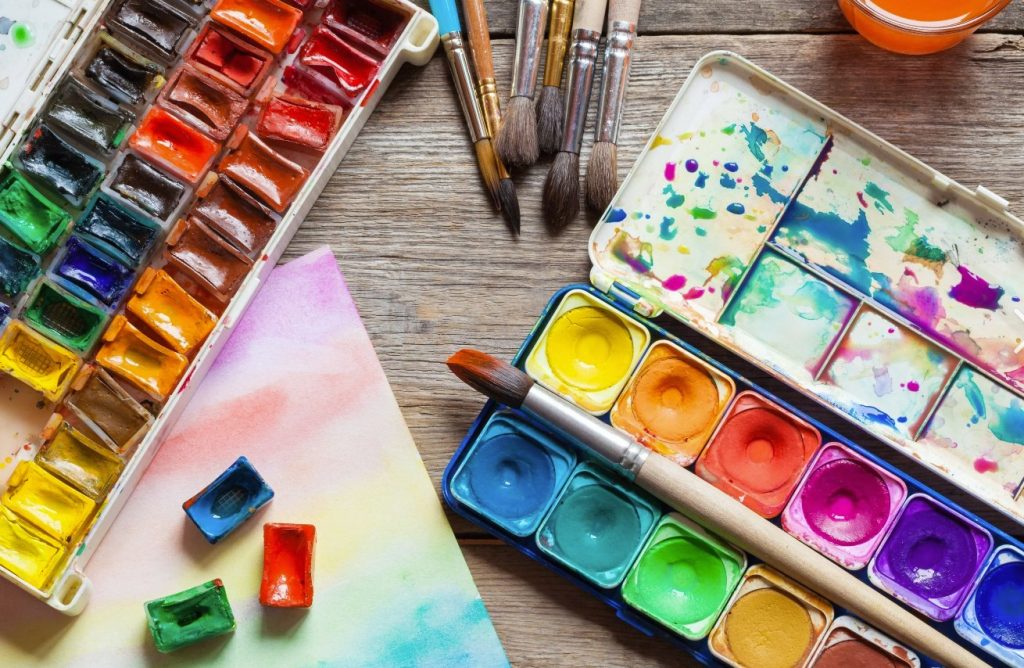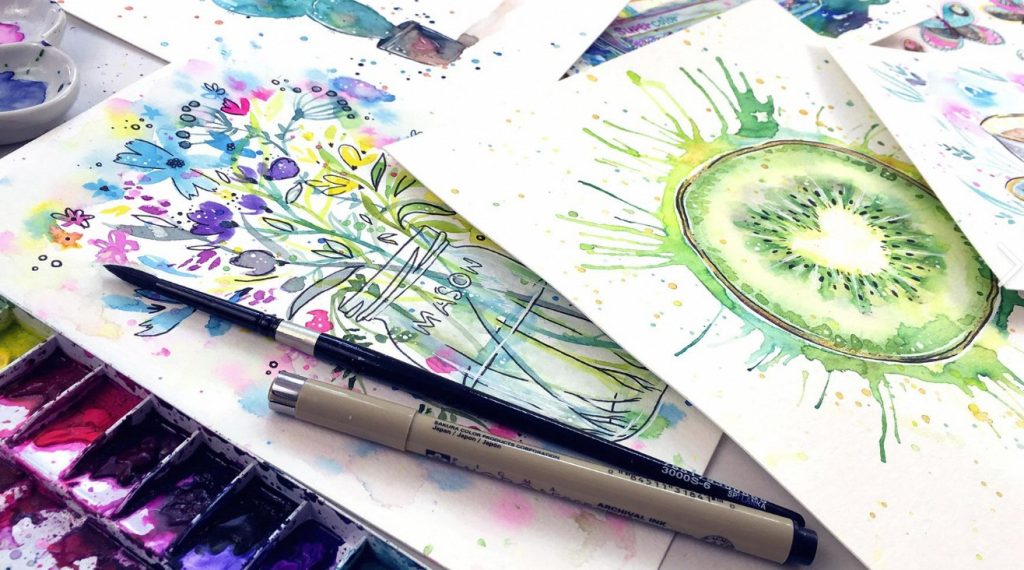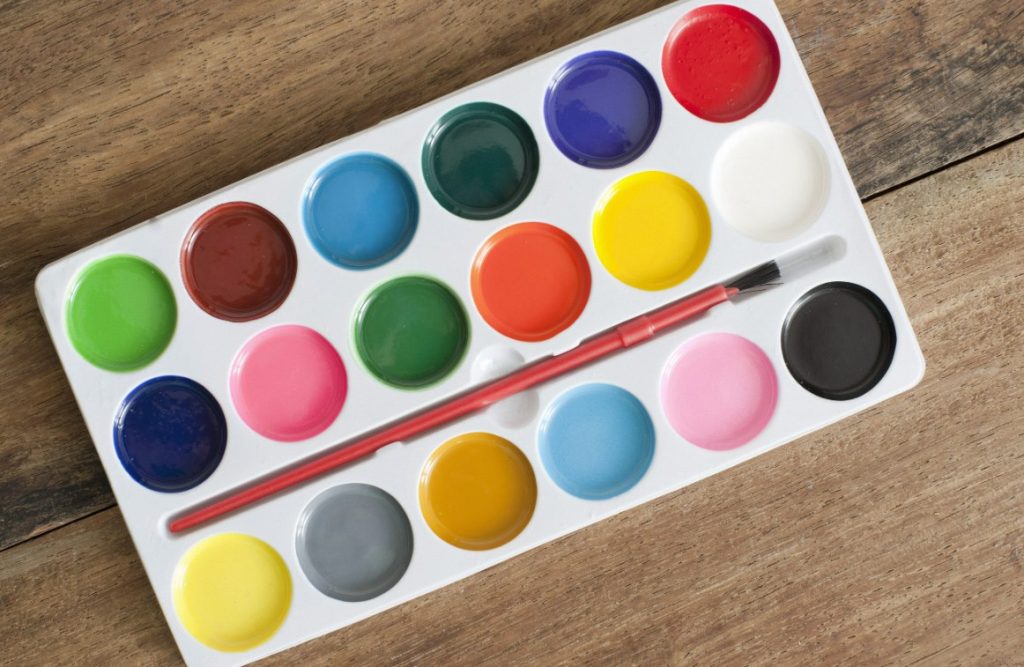Watercolor paints offer a unique and versatile medium for artistic expression. The way water interacts with pigments creates a beautiful flow and unpredictable effects, making it a favorite among artists of all skill levels. Whether you’re a seasoned watercolorist or just picking up a brush for the first time, there’s always something new to explore. This article offers creative watercolor painting ideas to spark your imagination and guide you on your artistic journey.

Part 1: Embrace the Unexpected
1. Explore Abstract Watercolor Techniques:
Watercolors are perfect for creating abstract art. Play with wet-on-wet techniques where you apply paint to wet paper, allowing the colors to bleed and blend organically. Experiment with granulation techniques using paints that separate into pigment flecks for a textured effect. Embrace the happy accidents that occur – the unpredictable nature of watercolors can lead to surprising and beautiful results.
2. Find Inspiration in Everyday Objects:
When seeking artistic inspiration, one doesn’t need to look further than their own home. Consider painting the everyday objects that adorn your living space. These items can include coffee mugs, houseplants, or wrinkled fabrics. They offer a wealth of visual interest. The interplay of light and shadow can be particularly fascinating when captured in watercolors. The textures, shapes, and colors of common household items can provide rich material for artistic exploration. This allows artists to delve into the nuances of form and composition. By focusing on these simple but evocative subjects, artists can uncover the beauty in the mundane. This infuses their paintings with a sense of intimacy and personal connection.
Part 2: Play with Color

1. Experiment with Color Mixing:
Watercolors offer artists the unique ability to create depth and complexity by layering translucent washes. This technique allows for the gradual buildup of colors, resulting in rich and nuanced tones within the artwork. One approach is experimenting with color gradients, achieved by mixing a concentrated puddle of paint with increasing amounts of water to create a seamless transition from dark to light. This technique can be used to evoke a sense of depth and dimension within the painting. Furthermore, artists can explore the creation of unexpected hues by mixing complementary colors, unlocking a wide spectrum of vibrant and harmonious tones. Additionally, working with a monochromatic palette using variations of a single color can offer a different way to explore the subtleties of tone and shade.
2. Let Loose and Create Color Studies:
Let go of any fear and let your creativity flow as you experiment with color! Abstract color studies can be a liberating way to explore the potential and power of different color combinations. By using bold washes, splatters, and drips, you can create a dynamic and expressive piece that reflects your artistic spirit. These color studies not only provide a chance to loosen up and have fun, but they can also serve as a valuable source of inspiration for future paintings. You can draw from these studies to inform and enrich your artistic practice. Furthermore, these vibrant and lively creations can also be appreciated for their own sake, showcasing the beauty and energy of color in all its glory. So, don’t hesitate to dive into the world of abstract color studies and unleash your creativity!

Part 3: Capture the Essence of a Subject
1. Focus on Mood and Atmosphere:
Watercolor painting offers the opportunity to capture the essence, mood, and atmosphere of a scene. Artists can use bold colors and sharp lines to convey the dynamic energy of urban life in a bustling city street. They can also use soft washes and gentle blending techniques to evoke tranquility in a peaceful meadow. By prioritizing mood and atmosphere over intricate details, watercolor artists can infuse their work with emotion and immediacy. This approach fosters expressive and evocative artwork, allowing artists to translate the emotional impact of a scene onto paper, creating captivating visual experiences for the audience.
2. Tell a Story with Minimalism:
Watercolors are a versatile medium for creating minimalist paintings imbued with emotion. By employing a limited color palette and focusing on the essential elements of a subject, artists can evoke powerful feelings and convey the essence of their chosen theme. This minimalist approach is particularly effective for capturing the soulful presence of a person or the innate character of an animal. By distilling the subject to its core elements, artists can unleash the emotional impact of their artwork, offering a contemplative and immersive viewing experience for the audience. This reductionist style can enhance the viewer’s connection with the subject, fostering a sense of intimacy and resonance. Through the nuanced application of color, light, and form, artists can create poignant and evocative paintings that resonate deeply with the viewer, transcending the boundaries of realism to evoke powerful emotions and engage the imagination.

Part 4: Let Your Imagination Take Flight
1. Combine Watercolor with Other Media:
Watercolors lend themselves well to artistic experimentation and can be enhanced by combining them with other mediums. Adding pen and ink details to watercolor paintings can provide definition and depth, elevating the visual appeal of the artwork. The contrast between the delicate watercolor washes and the precise lines of pen and ink can create a captivating effect. Another way to add visual interest is by incorporating acrylic splatters, which can introduce a burst of texture and a dynamic element to the painting. Additionally, consider experimenting with collage techniques by integrating pieces of fabric, paper, or other materials into your watercolor compositions. This collaborative approach can result in unique, multidimensional artwork that blends various textures and elements to create compelling visual narratives. By exploring these innovative combinations, artists can expand their creative horizons and produce captivating watercolor masterpieces that showcase the harmonious interplay of different artistic mediums.
2. Create a Series Based on a Theme:

Choose a theme that inspires you and create a series of watercolor paintings based on it. This could be anything from your favorite flowers to a specific emotion or memory. Working with a series allows you to explore a theme in depth and develop your artistic voice.
These are just a few ideas to get you started on your creative watercolor journey. Remember, the most important thing is to have fun and experiment! Embrace the unique properties of watercolors and allow yourself to be surprised by the results. With a little practice and exploration, you’ll be creating beautiful and expressive watercolor paintings in no time.


